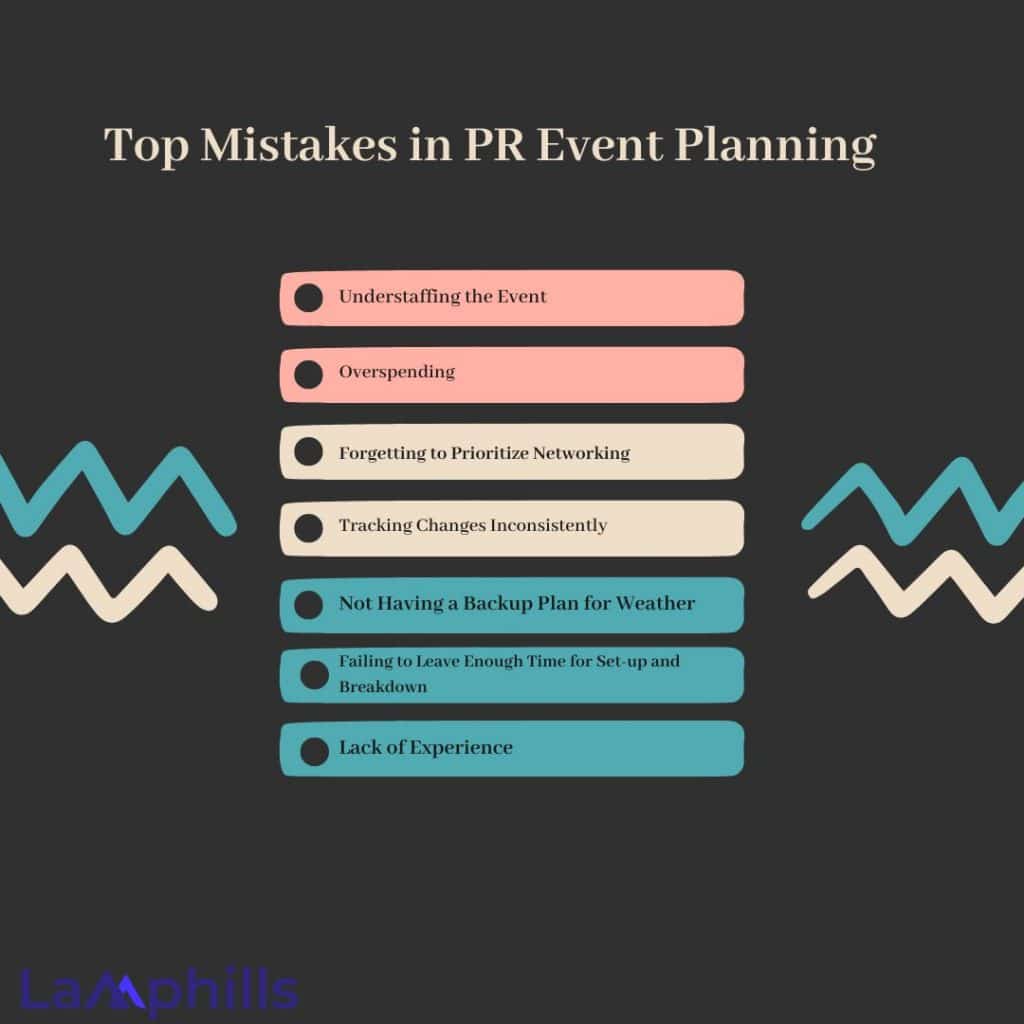Have you ever wondered how successful brands capture the public’s attention through flawlessly executed PR events? PR event planning isn’t just about flashy appearances; it’s about telling a compelling story that resonates with the audience, strategically aligning every detail with the brand’s message. Imagine walking into a venue, every element precisely tailored to inspire, engage, and influence—this is the magic of PR events. So, what does it take to create such a memorable experience? I will take you into the core elements of successful PR event planning, where strategy meets creativity.
Key Points
- A successful PR event begins with a clear understanding of the brand’s identity and objectives.
- Incorporate interactive elements like immersive brand experiences, unique installations, or surprise performances to create moments that will be remembered long after the event ends.
- Ensure you’ve invited key influencers, journalists, and bloggers who will amplify your message. Use hashtags, encourage live social media coverage, and offer shareable content to boost engagement.
- A meticulously planned event can unravel without flawless execution. It’s essential to work closely with your event team, ensuring that every aspect—from logistics to guest experience—runs smoothly.
What is PR Event Planning?
When I think of PR event planning, it’s really about making sure that the right kind of attention is drawn to your brand, product, or company. For me, it involves carefully coordinating every detail so that the event aligns with the goals of the organization. Whether it’s about launching a new product, attracting media coverage, or even drawing in potential employees, the purpose is clear—boost brand visibility and ensure that the event leaves a lasting, positive impression.
Whenever I plan a PR event, I make sure it integrates smoothly with the company’s overall public relations strategy. For example, if a company is rolling out a new product, the event should highlight that product in a way that resonates with the audience and garners media attention. In my experience, these events aren’t just about fun and glitz; they are strategic opportunities to create buzz, build relationships, and foster growth.
How to Make a PR Plan for an Event?
From setting clear goals to managing logistics and monitoring the event’s impact, each step of PR event planning plays a vital role in ensuring success. Below is a detailed, personalized approach to PR event planning, optimized for efficiency and positive outcomes.
#1. Review and Align Your PR Goals
In the initial stages of PR event planning, it’s crucial to align your goals with the broader objectives of the organization. This ensures that every aspect of the event is strategically linked to the company’s mission, vision, and brand messaging. During PR event planning, communicate these goals early to maintain transparency and keep everyone on track.
For example, if you’re launching a new product, your PR goal might be to secure features in major industry publications or generate 10,000 social media engagements with the event hashtag. These specific, actionable goals make it easier to track progress and demonstrate the event’s success.
Use this checklist to ensure your PR event goals are strategically aligned with your brand’s broader mission, setting a strong foundation for success:
PR Event Goal Alignment Checklist.PDF
#2. Identify and Understand Your Target Audience
A successful PR event begins with understanding your target audience. Audience segmentation is vital because not all attendees will be interested in the same aspects of your event. By identifying different audience personas—such as potential customers, journalists, or industry influencers—you can tailor your PR event planning efforts to meet the specific needs and interests of each group.
For example, if your PR event caters to a local community, you’ll want to emphasize community impact and local benefits in your messaging. On the other hand, if the event is global, focusing on universal themes or cutting-edge innovations may resonate better. This targeted approach increases engagement and ensures a higher conversion rate for event registrations or press coverage.
#3. Set a Realistic Budget
Budgeting is a critical part of PR event planning because it impacts the scope and execution of the event. Begin by listing every possible expense, from the venue and marketing materials to logistics and event staff. Keep in mind that PR event planning often requires additional costs for media outreach, such as preparing press kits, hiring photographers, and offering media perks.
It’s wise to allocate at least 10-15% of your budget as a contingency fund to cover any unexpected costs, such as last-minute technical issues or additional promotional needs. Once you have an estimated budget, prioritize spending on aspects of the event that align most closely with your PR goals. If generating buzz is a top priority, for instance, you might allocate more funds toward influencer partnerships or media sponsorships.
#4. Create a Detailed Event Timeline
Developing a comprehensive timeline is essential for staying organized and ensuring the event goes smoothly. Begin with long-term milestones, like securing a venue and reaching out to sponsors, and gradually work towards shorter-term tasks, like creating event collateral or coordinating with vendors. PR event planning timelines typically include press outreach, social media promotion, and media follow-ups, which should be scheduled in advance to ensure enough time for adequate press coverage.
#5. Choose the Right Format and Venue
The venue and format of your event are fundamental to its overall success. When considering the venue, think about the audience size, event type, and PR objectives. For instance, a product launch might benefit from a venue with advanced multimedia capabilities, while a charity gala might require a more elegant or exclusive location.
Also, consider how accessible the venue is for your target audience and whether it aligns with the tone of the event. PR event planning must include these factors to ensure a cohesive and memorable experience for attendees and media representatives. In terms of format, think about whether an in-person, virtual, or hybrid event best suits your goals.
#6. Design an Engaging Attendee Experience
Crafting a memorable attending experience is crucial to ensuring your PR event leaves a lasting impression. Beyond the agenda, consider how attendees will engage with your brand throughout the event. For example, include interactive elements such as live polls, Q&A sessions, or hands-on demonstrations of new products.
These not only boost engagement but also provide additional PR opportunities, as media outlets often highlight interactive or innovative event features. Post-event follow-ups, such as thank-you emails with event highlights or exclusive content, also contribute to ongoing engagement and brand loyalty, amplifying the impact of your PR event long after it concludes.
#7. Leverage Sponsorships
Sponsorships not only alleviate financial strain but also provide additional PR avenues. When selecting sponsors, choose brands that align with your event’s goals and your audience’s interests. For instance, if your event is technology-focused, partnering with a prominent tech brand can enhance credibility and attract media attention. Sponsors also bring their own PR value, as they often promote the event through their channels, amplifying your event’s reach.
PR event planning should include strategies for maximizing sponsor involvement, such as co-branded content or media exposure through joint press releases. This adds layers of exposure that benefit both the event organizer and the sponsors.
#8. Create Compelling PR Assets
In PR event planning, ensure you have press kits ready, which include event details, speaker bios, high-resolution images, and any relevant multimedia. These materials should be crafted to appeal to the press, influencers, and potential attendees, ensuring consistency across all platforms.
Visual assets, such as videos or photos, can boost media interest and engagement, particularly on social media. Creating a strong visual narrative around your event helps to attract attention and converts media coverage into tangible attendance and engagement.
#9. Build Relationships with the Media
Building strong relationships with media representatives is crucial for successful PR event planning. Start by researching journalists who cover your industry and build rapport by engaging with their work before reaching out with a pitch. Personalizing your outreach with references to past articles or relevant topics they’ve covered demonstrates that you’ve done your homework and are genuinely interested in a partnership.
Over time, as these relationships grow, media professionals will be more inclined to cover your event, especially if you’ve already established yourself as a reliable and credible source.
#10. Track and Measure PR Success
Evaluating the success of your PR event planning efforts is key to improving future campaigns. Start by setting clear metrics for success, such as media mentions, social media engagement, or the number of press attendees. Utilize tools like Google Alerts, social listening software, or media monitoring services to track where and how your event is being covered. This will help you understand which strategies were most effective in generating buzz and media interest.
Post-event reports also play an important role in assessing PR impact. Analyze the quality and reach of media coverage, noting which outlets provided the most value in terms of audience engagement or attendance conversion.
Top Mistakes in PR Event Planning

Here’s a detailed breakdown of the top common mistakes and challenges event planners face:
#1. Understaffing the Event
I’ve seen firsthand how understaffing can derail an otherwise perfectly planned event. One corporate conference I went to had several breakout sessions running simultaneously, and they were short on volunteers to guide attendees to their respective rooms.
The result was chaotic, with people wandering around and confused about where to go, which made the event feel disorganized. After that, I learned the hard way to calculate staff needs meticulously, always considering what happens if more people show up than expected. It’s always better to overestimate staffing needs rather than be left scrambling on event day.
#2. Overspending
Budgeting feels like walking a tightrope, especially with the unpredictability of last-minute requests. One event I planned, a tech expo, started with a reasonable budget, but after a series of “necessary” upgrades like AV enhancements and catering upgrades, I found we’d spent 20% over our planned budget.
By the time we wrapped, I realized that better tracking and setting stricter budget boundaries could have saved us both money and stress. Regularly track your budget throughout the planning process, comparing real costs against estimates. Communicate clearly to stakeholders about how changes will impact the overall budget before approving them.
#3. Forgetting to Prioritize Networking
One of the most overlooked aspects of event planning is creating space for organic networking. At a large corporate seminar I managed, I made the mistake of packing the schedule too tightly, leaving no room for attendees to mingle. I could feel the frustration in the room—people wanted to make connections but had no time to do so. After that experience, I make sure to weave in pockets of free time and casual social events, like post-panel happy hours or speed-networking sessions.
#4. Tracking Changes Inconsistently
During one of my first major events, I neglected to track minor changes to the schedule and budget carefully. An extra session was added, and I thought, “It’s just one more thing, not a big deal.” But come event day, it turned out that this small addition led to overtime costs for vendors and staff, ultimately pushing us over budget. Now, I know better than to approve changes without updating the budget and timeline.
#5. Not Having a Backup Plan for Weather
Planning outdoor events always makes me anxious because you’re at the mercy of the elements. A client once insisted on an outdoor venue for a fall wedding. The weather forecast was clear, but three days before the event, a rainstorm was predicted. Thankfully, we had already lined up a nearby indoor venue as Plan B, so we seamlessly shifted the event indoors. This taught me that no matter how perfect the weather seems, you can’t control it, so you should always have a backup.
#6. Failing to Leave Enough Time for Set-up and Breakdown
During an awards gala, we severely underestimated the time needed to set up the stage and décor. By the time the first guests arrived, half the team was still placing table settings, and the sound check was incomplete. It was a nightmare. I’ve since learned to allow ample time for both set-up and teardown and to always confirm with the venue how much access time you’ll have.
#7. Lack of Experience
One of the biggest challenges for new planners is that real-world problems often look different from textbook examples. During one of my first events, I hadn’t accounted for how unpredictable human behavior can be—people came late, equipment malfunctioned, and vendors arrived at the wrong times. I learned quickly that experience is invaluable, and having experienced mentors or colleagues to call on can be a lifesaver.
Are Events Part of PR?
PR event planning is all about creating special events that help a brand stand out, introduce new products, or build better connections with the media and public. It’s a key part of public relations, focused on making events that leave a great impression and spread the brand’s message.
What Is the Role of PR in Event Planning?
PR event planning involves organizing and executing a public relations event that showcases a company, brand, product, service, or client in order to attract new customers. PR events can have many goals, including promoting brand recognition and gaining media attention.
What Are the 4 Steps of the PR Planning Process?
With this public relations primer in your brain, let’s get cracking at how to build the thoughtful public relations strategy you know you need. The steps include:
- Creating a Successful Public Relations Plan
- Analysis (based on research)
- Establish goals and objectives
- Implement your messaging
- Evaluate your efforts
Conclusion
PR event planning is a comprehensive process that requires attention to detail, strategic foresight, and a clear understanding of your audience and goals. By reviewing your objectives, creating a solid plan, promoting your event, and following up effectively, your PR event can significantly enhance your brand’s image and visibility.
Following these steps ensures your event not only meets but exceeds expectations, leaving a lasting impact on your audience.
Related Articles
- Is Ambush Marketing Worth the Risk? Pros, Cons, and Examples for Nigerian Brands
- What is Vlogging? Proven Tips To Succeed With Vlogging
- Proven Techniques For Accurate Brand Value
- Go-to-Market Strategy Examples: Proven Approaches






